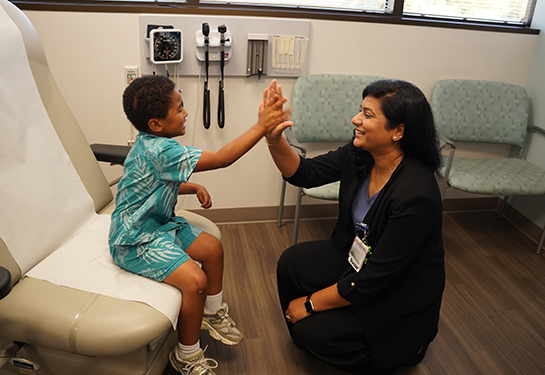Back to school 2024 amid a COVID surge: Latest symptoms and guidelines
As children go back to school this month, COVID is surging again in California and around the country. The latest surge is fueled by a group of FLiRT subvariants that are proving to be the most infectious strains we have seen since COVID turned our world upside down in 2020.
KP.3.1.1 and KP.3 are just two of the predominant FLiRT subvariants that are responsible for 27.8% and 20.1% of all COVID infections in the United States. This is according to the Centers for Disease Control and Prevention’s COVID data tracker for the most recent two-week data period, ending the week of Aug. 3.
“I think a lot of families have moved on from COVID but COVID is still with us and has been making that known this summer with the latest surge,” said Dean Blumberg, chief of pediatric infectious diseases at UC Davis Children’s Hospital.
COVID levels in California wastewater have been “high” or “very high” for the past eight weeks.
As children go back to school, we asked Blumberg what families need to know about these variants and the latest surge.
What are your recommendations for kids as they return to school?
Vaccines:
First off, I would recommend that everyone, 6 months and older, get the new COVID vaccine when it comes out this fall.
Testing:
Testing for COVID is still recommended if your child isn’t feeling well. Tests are sold at local drugstores or online. If their first test is negative, test again one-to-two days later. The over-the-counter tests still work for the latest variants. These provide results within 15-30 minutes. Also be aware that most at-home tests can be safely used past the expiration date on the box. Check the FDA’s AT-Home Covid-19 Test page to see if your kit’s expiration date has been extended. If your child has been exposed to someone who has tested positive for COVID, test your child after their exposure and then three-to-five days after their exposure.
Watch how to do a rapid an at-home COVID-19 rapid antigen test correctly.
Masking:
If you are in crowded situations with others or traveling, I’d recommend masking with a well-fitted KN95 or N95 mask. One-way masking is still good protection. According to the American Academy of Pediatrics, children ages 2 and older can safely wear a mask. But the exception is for anyone who cannot easily remove their own mask or who has trouble breathing.
If my child had COVID this summer, will that protect them from the FLiRT subvariants?
Because the mutations are different enough between the related FLiRT subvariants, we’re seeing limited immunity when someone gets sick with COVID now. It doesn’t provide blanket immunity from the other FLiRT subvariants. What we really need is a new vaccine with a better match to these currently circulating strains, which should be coming this fall.
What are the latest COVID symptoms to look for?
COVID is still primarily a respiratory illness so we’re seeing:
- Runny nose
- Cough
- Sore throat
- Fever
- Chills
- Body aches
- Fatigue
But people are also reporting nausea, vomiting, diarrhea, rashes, brain fog and headaches. Resting during this acute period will help your body fight off the virus.
Can children get long COVID?
We’ve seen that when children get a COVID infection, they often have fewer symptoms and are less severe. But research has shown that about 6 million children in the U.S. may have long COVID. Long COVID is when symptoms persist for or are developed at least four weeks after a COVID infection. This can occur in any part of the body, even after a mild case of COVID.
What should I do if my child isn’t feeling well?
If a child isn’t feeling well or if they test positive for COVID, keep them home and away from other children. It’s common sense if they don’t feel well, they won’t want to learn at school or go to daycare. And you don’t want them to make other adults or children sick. Check your child’s school or daycare recommendations for guidance about returning after COVID.
If my child has COVID, when should I bring them to see a doctor?
Most COVID infections will pass on their own. But be sure to stay hydrated and rotate between ibuprofen (Advil or Motrin) and acetaminophen (Tylenol) about every three hours to help manage fevers. Those who get worsening symptoms, have difficulty breathing or are unable to keep liquids down, should seek medical attention immediately.




